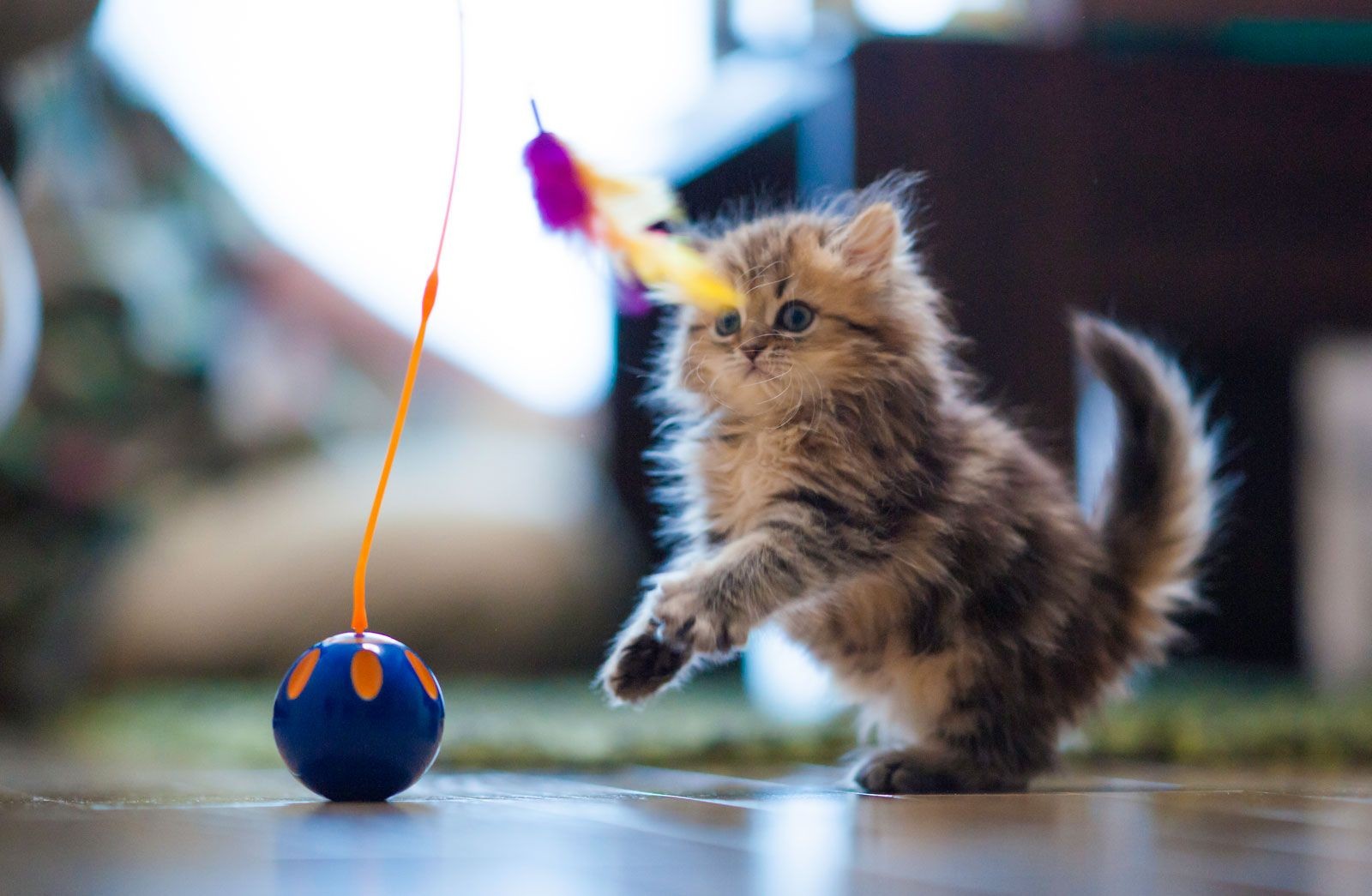Cats have been our beloved companions for thousands of years, but are they truly suitable pets for everyone? The answer is a resounding yes – for many households. Understanding cat care is key to ensuring a harmonious relationship with these fascinating creatures. This guide will delve into the essentials of cat care and maintenance, helping you decide if a feline friend is the right pet for you and how to provide them with a happy, healthy life.
Feeding Your Feline Friend: What Cats Need to Eat
[](Bengal cat eating wet food from ceramic dish)
Bengal cat enjoying a meal of wet food from a ceramic dish.
Cats are obligate carnivores, meaning their bodies are designed to thrive on a meat-based diet. Unlike dogs, cats have specific nutritional needs that must be met through animal protein. Their digestive systems and teeth are perfectly adapted for consuming prey. Notice their sharp canine teeth? These are designed for catching and killing prey, while their teeth are generally geared towards cutting rather than chewing. This biological imperative means that dog food is unsuitable for cats, as it lacks the necessary protein levels and specific nutrients cats require.
In their natural habitat, cats obtain all their necessary nutrients by consuming prey – muscle, bones, organs, and even stomach contents. This includes crucial fluids and essential amino acids like taurine, which cats cannot produce on their own. While primarily meat-eaters, you might observe your cat nibbling on grass occasionally. This behavior can serve as a natural way to aid digestion, act as a laxative, and help eliminate hairballs.
For domestic cats, a balanced diet is paramount. While convenient, dry cat food often lacks moisture and can be high in carbohydrates from plant sources like corn, wheat, or rice. A cat’s digestive system is not optimized for processing large amounts of carbohydrates. Therefore, when choosing cat food, it’s important to be discerning.
Look for foods that meet the nutritional standards set by the Association of American Feed Control Officials (AAFCO). However, remember that labels can be misleading. A high protein percentage might not always indicate high-quality, meat-based protein. Always check the ingredient list, which is ordered by weight, to see the primary sources of protein and other nutrients.
Wet vs. Dry Cat Food: Choosing the Right Option
Deciding between wet and dry cat food is a common dilemma for cat owners. Both have their advantages and disadvantages. Dry food offers convenience, is easy to store, and is generally more affordable. Its texture can also help reduce tartar buildup, promoting dental health. However, dry food is lower in moisture, potentially leading to dehydration, and often higher in carbohydrates, which can contribute to weight gain and related health issues like diabetes. Furthermore, a diet solely based on dry food can increase the risk of feline lower urinary tract disease (FLUTD).
Wet food, while often more expensive and less convenient to store, offers several benefits. It is typically easier for cats to digest, higher in protein, and often more appealing to their palates. With approximately 75% water content, wet food is an excellent source of hydration, especially beneficial for cats with kidney issues or those who don’t drink enough water.
Ultimately, the best choice might be a combination of both wet and dry food. Regardless of your choice, prioritize AAFCO-approved foods that have undergone feeding trials. This ensures the food is “complete” – containing all necessary nutrients – and “balanced” – with nutrients in the correct proportions for your cat’s life stage. Be wary of foods labeled as “treats” or “supplementary,” as these are not designed to be a cat’s sole source of nutrition. Investing in high-quality cat food is an investment in your pet’s long-term health and can potentially reduce future veterinary costs.
Combating Cat Obesity: Keeping Your Cat at a Healthy Weight
Just like humans, cats can struggle with weight issues. The American Veterinary Medical Association (AVMA) reports that over half of domestic cats are overweight or obese. Overweight is defined as 10-20% above ideal body weight, while obesity is over 20% above. Excess weight in cats can lead to serious health problems, including arthritis, diabetes, and heart disease.
To prevent or manage obesity, monitor your cat’s weight and body condition. If your cat is overweight, a reduced-calorie diet is necessary. Avoid free-feeding, where dry food is available constantly, as this is a major contributor to feline obesity. However, drastic calorie restriction or fasting is dangerous for cats and can cause hepatic lipidosis, a potentially fatal liver condition. Wet food can be beneficial in weight management due to its lower calorie density and higher water content. Consult your veterinarian to determine the ideal weight and a safe weight loss plan for your cat.
Bathing Your Cat: When and How
Bathing is not a routine requirement for most cats. They are meticulous groomers and generally keep themselves clean. However, there are situations where a bath becomes necessary. These include cats with long or dense coats that they struggle to groom themselves, cats who have gotten into something messy or smelly, or cats with skin conditions or parasites as advised by a vet. Certain breeds, like Persians with their long fur or breeds with facial folds prone to tear staining, may require more frequent cleaning or bathing.
If bathing is needed, start acclimating your cat from a young age, as most cats are not fond of water. Use shampoos specifically formulated for cats, and if using flea shampoo, ensure it’s labeled as safe for feline use. Make the experience as calm and positive as possible to minimize stress for your cat.
Nail, Tooth, and Ear Care: Essential Hygiene Practices
Just like us, cats require regular hygiene care beyond just grooming. Dental care is often overlooked but is crucial for a cat’s overall health. Cats are masters at hiding pain, so dental problems might not be obvious until they become severe. Bad breath or reluctance to be touched around the mouth are red flags. Annual veterinary dental checkups are vital for early detection and prevention of dental disease, which has been linked to serious systemic illnesses like heart and kidney disease.
Brushing your cat’s teeth from kittenhood is ideal. Use cat-specific toothpaste (never human toothpaste, as fluoride is toxic to cats) and brushes or finger brushes. Gauze wrapped around a finger can also be effective. Start slowly and keep sessions short and positive. Professional veterinary dental cleanings are still recommended annually.
Nail trimming is another regular task, typically every 3-4 weeks. Use pet nail trimmers and clip only the sharp white tip, avoiding the pink quick to prevent pain and bleeding. Regular nail trims protect your furniture and reduce the risk of scratches.
Ear and eye care are also important. Healthy cat eyes should be clear, without discharge, redness, or cloudiness. Wipe away any normal eye “sleep” with a damp cotton ball. Similarly, healthy ears are clean and free of excessive wax or discharge. Clean the outer ear flap with a damp cotton ball, but never insert anything into the ear canal. Any signs of redness, inflammation, or dark discharge in the ears or eyes warrant a veterinary visit as they could indicate infection or other medical issues.
Playtime: Bonding and Exercise for Your Cat
[ kitten playing with toy](kitten playing with toy)
kitten playing with toy](kitten playing with toy)
A playful kitten engaging with a toy, highlighting the importance of playtime for cats.
Building a strong bond with your cat is essential for their happiness and well-being. Play is a fantastic way to strengthen this bond. Early play is crucial for kittens, teaching them social skills and appropriate biting and scratching behavior. Playtime also provides vital exercise, especially for indoor cats.
Cats thrive on interactive play that mimics hunting. Feather wands, laser pointers (used responsibly), and toy mice are excellent choices. Establish a consistent playtime routine to cater to their habitual nature. Regular play sessions keep your cat physically and mentally stimulated, reducing boredom and potential behavioral problems.
Training Your Cat: Dispelling the Myths
Contrary to popular belief, cats are trainable. While they may not be as readily obedient as dogs, training is possible and beneficial. Basic training, such as using the litter box and scratching post, is often easily achieved as these behaviors are instinctual.
Training provides mental stimulation, alleviates boredom, and can strengthen the bond between you and your cat. Bored cats may resort to destructive behaviors. Training sessions should be short, positive, and reward-based. Cats are highly motivated by food, so treats are effective reinforcers. Patience, consistency, and positive reinforcement are key to successful cat training. Remember, cats are independent thinkers and are more likely to cooperate when they see a personal benefit.
Grooming Your Cat: Maintaining a Healthy Coat
[](Maine Coon cat grooming)
A red Maine Coon cat meticulously grooming its fur, demonstrating natural feline cleanliness.
Cats are renowned for their fastidious grooming habits, dedicating a significant portion of their day to self-cleaning. Their tongues are equipped with tiny, backward-facing spines called papillae, giving them a rough texture ideal for removing loose fur, debris, and even rasping meat from bones. Grooming also distributes natural oils throughout their coat, providing water resistance and promoting healthy skin. Furthermore, it stimulates circulation and helps regulate body temperature through saliva evaporation.
Despite their self-grooming prowess, many cats benefit from grooming assistance, especially long-haired breeds. Regular brushing prevents matting, a serious health concern, and reduces hairballs. Grooming sessions also provide an opportunity to check for any lumps, bumps, or skin issues. Start a grooming routine early in a cat’s life to acclimate them to the process and make it a positive bonding experience.
Grooming Needs Based on Hair Length: Tailoring Your Approach
Different cat breeds have varying coat types and grooming needs.
Hairless Cats: Breeds like the Sphynx, despite lacking fur, still require grooming. They produce skin oils that, without hair to absorb them, can lead to skin problems and a sticky coat. Regular wipe-downs and weekly baths with hypoallergenic shampoo are necessary.
[](Sphynx cat)
A Sphynx cat, showcasing its unique hairless coat and need for specific grooming.
Shorthaired Cats: Shorthaired cats generally require less grooming, particularly breeds with very short hair like Siamese. Seasonal shedding periods may necessitate increased brushing. However, some shorthaired breeds with thicker undercoats, like British Shorthairs, need regular year-round grooming to prevent matting.
[](Meet shorthair cat breeds: Cornish Rex, Manx, and more)
A collage of shorthair cat breeds, illustrating the diversity within this category.
Longhaired Cats: Longhaired cats, such as Persians, Maine Coons, and Norwegian Forest Cats, demand the most grooming. Their coats are prone to tangles and mats, especially in areas like behind the ears, underarms, and hind legs. Daily or near-daily combing with a stainless steel comb is often necessary to maintain their coat health and prevent matting.
Conclusion: Are Cats the Right Pet for You?
Cats can undoubtedly make wonderful pets. They are intelligent, independent, affectionate, and relatively low-maintenance compared to some other animals. However, “low-maintenance” doesn’t mean “no-maintenance.” Cats require specific care, including proper nutrition, grooming, healthcare, and mental and physical stimulation.
Understanding these needs and being prepared to meet them is crucial before bringing a cat into your home. If you are ready to provide the care and attention they require, cats can bring immense joy, companionship, and love into your life, proving to be truly exceptional pets.

